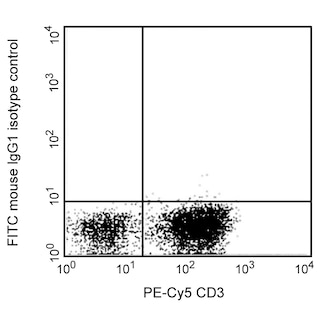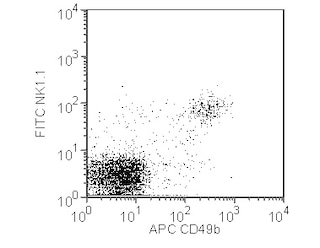-
抗体試薬
- フローサイトメトリー用試薬
-
ウェスタンブロッティング抗体試薬
- イムノアッセイ試薬
-
シングルセル試薬
- BD® AbSeq Assay | シングルセル試薬
- BD Rhapsody™ Accessory Kits | シングルセル試薬
- BD® Single-Cell Multiplexing Kit | シングルセル試薬
- BD Rhapsody™ Targeted mRNA Kits | シングルセル試薬
- BD Rhapsody™ Whole Transcriptome Analysis (WTA) Amplification Kit | シングルセル試薬
- BD Rhapsody™ TCR/BCR Profiling Assays (VDJ Assays) | シングルセル試薬
- BD® OMICS-Guard Sample Preservation Buffer
-
細胞機能評価のための試薬
-
顕微鏡・イメージング用試薬
-
細胞調製・分離試薬
-
- BD® AbSeq Assay | シングルセル試薬
- BD Rhapsody™ Accessory Kits | シングルセル試薬
- BD® Single-Cell Multiplexing Kit | シングルセル試薬
- BD Rhapsody™ Targeted mRNA Kits | シングルセル試薬
- BD Rhapsody™ Whole Transcriptome Analysis (WTA) Amplification Kit | シングルセル試薬
- BD Rhapsody™ TCR/BCR Profiling Assays (VDJ Assays) | シングルセル試薬
- BD® OMICS-Guard Sample Preservation Buffer
- Japan (Japanese)
-
Change country/language
Old Browser
Looks like you're visiting us from {countryName}.
Would you like to stay on the current country site or be switched to your country?


.png)

Multicolor flow cytometric analysis of Ly-49H expression on BALB/c and C57BL/6 splenocytes. Mouse spleen cells from BALB/c (Left Panel) or C57BL/6 (Right Panel) mice were stained with FITC Mouse Anti-Mouse Ly-49H (Cat. No. 562536) and APC Rat Anti-Mouse CD49b (Clone DX5, Cat. No. 560628) antibodies. Two-color flow cytometric dot plots showing the correlated expression patterns of CD49b versus Ly-49H were derived from gated events with the forward and side light-scatter characteristics of viable splenocytes. As expected, only C57BL/6 mouse splenocytes contained a subset of NK cells (Right Panel) that expressed Ly-49H whereas BALB/c splenocytes were Ly-49H-negative (Left Panel). Flow cytometry was performed using a BD™ LSR II Flow Cytometer System.
.png)

BD Pharmingen™ FITC Mouse Anti-Mouse Ly-49H
.png)
Regulatory Statusの凡例
Any use of products other than the permitted use without the express written authorization of Becton, Dickinson and Company is strictly prohibited.
Preparation and Storage
Product Notices
- Since applications vary, each investigator should titrate the reagent to obtain optimal results.
- An isotype control should be used at the same concentration as the antibody of interest.
- Please refer to www.bdbiosciences.com/us/s/resources for technical protocols.
- Caution: Sodium azide yields highly toxic hydrazoic acid under acidic conditions. Dilute azide compounds in running water before discarding to avoid accumulation of potentially explosive deposits in plumbing.
- For fluorochrome spectra and suitable instrument settings, please refer to our Multicolor Flow Cytometry web page at www.bdbiosciences.com/colors.
関連製品



The 3D10 monoclonal antibody specifically binds to mouse Lymphocyte antigen 49H (Ly-49H; also known as Klra8 or Killer cell lectin-like receptor 8). The 3D10 antibody does not crossreact with related molecules such as Ly-49A, C, D or G2. Ly-49H is a type II transmembrane protein and a member of the Ly-49 C-type lectin multigene family of receptors expressed by NK cells. Cell surface Ly-49H is expressed by a subset of NK cells but not by NKT cells. Ly-49H is expressed by C57BL/6 and NWNA but not by BALB/c or DBA/2 mouse NK cells. Cell surface Ly-49H presents as a ~110 kDa disfulfide-linked homodimer and associates with signaling subunits such as DAP10 and DAP12 for optimal transduction of intracellular activation signals. Crosslinking of Ly-49H with the 3D10 antibody reportedly induces NK cell cytotoxicity and cytokine production. Ly-49H recognizes the mouse cytomegalovirus m157 glycoprotein that is expressed by infected cells and is required for protection against cytomegalovirus infection.

Development References (5)
-
Brennan J, Mager D, Jefferies W, Takei F. Expression of different members of the Ly-49 gene family defines distinct natural killer cell subsets and cell adhesion properties. J Exp Med. 1994; 180(6):2287-2295. (Biology). View Reference
-
Brown MG, Dokun AO, Heusel JW, et al. Vital involvement of a natural cell activation receptor in resistance to viral infection. Science. 2001; 292(5518):934-937. (Clone-specific: Activation, Bioassay, Blocking, Cytotoxicity, Flow cytometry). View Reference
-
Orr MT, Sun JC, Hesslein DG, et al. Ly49H signaling through DAP10 is essential for optimal natural killer cell responses to mouse cytomegalovirus infection. J Exp Med. 2009; 206(4):807-817. (Clone-specific: Blocking, Flow cytometry). View Reference
-
Silver ET, Elliott JF, Kane KP. Alternatively spliced Ly-49D and H transcripts are found in IL-2-activated NK cells. Immunogenetics. 1996; 44(6):478-482. (Biology). View Reference
-
Smith HR, Chuang HH, Wang LL, Salcedo M, Heusel JW, Yokoyama WM. Nonstochastic Coexpression of activation receptors on murine Natural Killer cells. J Exp Med. 2000; 191(8):1341-1354. (Immunogen: Activation, Cytotoxicity, Flow cytometry, Immunoprecipitation). View Reference
Please refer to Support Documents for Quality Certificates
Global - Refer to manufacturer's instructions for use and related User Manuals and Technical data sheets before using this products as described
Comparisons, where applicable, are made against older BD Technology, manual methods or are general performance claims. Comparisons are not made against non-BD technologies, unless otherwise noted.
For Research Use Only. Not for use in diagnostic or therapeutic procedures.
Report a Site Issue
This form is intended to help us improve our website experience. For other support, please visit our Contact Us page.